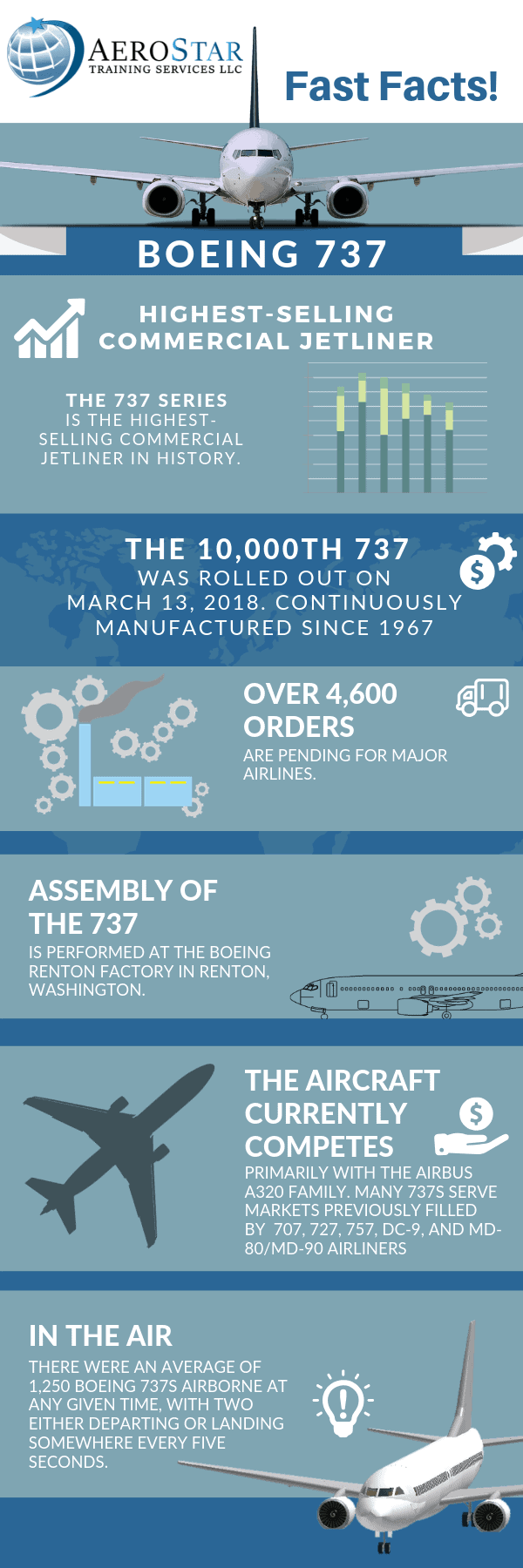Five Reasons to Get a Boeing 737 Type Rating

The decision to become an airline pilot is a great one, especially at this time in history.
Many more pilots will be needed to replace retiring pilots, and to fly people in parts of the world that are enjoying air travel at unprecedented levels.
Getting your initial pilot training and good fundamentals is a solid first step. Getting your private rating, instrument, commercial and multi-engine can all serve well for a variety of jobs in aviation.
But to fly an airline, you’ll need a type rating. This is a special certificate that provides the education and tests your knowledge to be sure you are a safe pilot.
The decision to get a type rating in a Boeing 737 is a great one, for five reasons:
- You’ll have lots of options of airlines to work for!
- There are a LOT of 737 aircraft being flown in different places around the world.
- A VERY large number of 737s are still being manufactured, which indicates it has a long future ahead of it.
- It’s in very wide usage in a variety of different locations, routes and airlines.
- Pilots love the 737.
1. Lots of Airlines.
The 737 series is the highest-selling commercial jetliner in history.
Kingsley-Jones, Max. “6,000 and counting for Boeing’s popular little twinjet.”Flight International, Reed Business Information, April 22, 2009. Retrieved: April 22, 2009.
2. Lots of Airplanes in Use
The 10,000th 737 was rolled out on March 13, 2018. This series has been continuously manufactured since 1967.
Max Kingsley-Jones (March 13, 2018). “How Boeing built 10,000 737s”. Flightglobal.
3. Lots of Orders Being Built
Over 4,600 orders are being built in the Boeing Renton Factory in Washington State, USA.
Airbus A320 Aircraft Facts, Dates and History.”Archived January 19, 2013, at the Wayback MachineFlightlevel350.com. Retrieved: May 12, 2010.
4. Wide Usage
There are an average of 1,250 Boeing 737s airborne at any given time, with two either departing or landing somewhere every five seconds.
5. Pilots Love Them
Boeing designs its jets with an autothrottle.
With Boeing’s autothrottle system, the thrust levers are “back-driven,” constantly adjusted by motors changing the levers’ position based on the system’s commands.
“With the Boeing, I see the throttles moving and it gives me that feedback. It improves my situational awareness to no end because I know what the airplane is trying to do to the engines,” said Captain Rory King in an interview TPG.
He should know. He’s flown them all. Early in his airline career, Kay flew the Boeing 727 and the 737s that entered service in the late 1980s, now known as 737 Classic. He went on to be First Officer on the larger Boeing 757 and the twin-aisle 767, before making captain on the Airbus A320, which he flew for years. With over 24,000 hours in the air, Kay is a training and check pilot on the 757 and 767 and will soon move to captaining the Boeing 777, the biggest passenger plane flying for any US airline. He’s also former Air Safety Chairman for the Air Line Pilots Association.
Is Boeing or Airbus Better? We Asked an Airline Pilot- by Howard Slutsken, TPG

